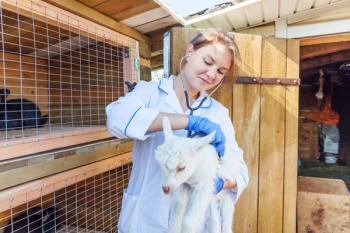
Baboons Produce Vowel-Like Vocalizations That Resemble Human Vowels
Despite having a high larynx, baboons produce 5 distinct classes of vowel-like vocalizations that are comparable to human vowels.
A study recently published in PLOS One reported on baboons’ ability to produce vowel-like vocalizations that resemble human vowels. The study’s findings suggest that human language evolved from the articulatory skills of ancient ancestors and challenge the long-held assumption that vowel sounds characteristic of human speech require a low larynx.
Human language is believed to have originated 70,000 to 100,00 years ago. Because nonhuman primates have a high larynx—compared with a low larynx in humans—it has been thought that nonhuman primates were incapable of producing human speech, particularly vowels. However, previous studies in Diana monkeys have challenged the assumed necessity of a low larynx for vowel sound production.
From September 2012 to June 2013, study investigators recorded and analyzed the spontaneous vocalizations of 15 guinea baboons (3 male, 12 female) housed at a French primate research center; a specific focus was on vocalizations produced during the 30 minutes prior to the evening feeding.
Vocalizations were divided into five types: grunts, wahoos (split into “wa” and “hoo”), barks, yaks, and copulation calls. Male and female baboons produced grunts, while only males produced wahoos and only females produced barks, yaks, and copulation calls; typically, males or females can produce wahoos, barks, and yaks.
The authors analyzed approximately 1400 vocalizations that contained what the authors termed “vowel-like segments” (VLSs)—vocalization segments with consistent and detectable formants, which are bands of frequency associated with specific resonances in the vocal tract. VLSs were grouped according to vocalization type.
To begin the acoustic analysis, the authors identified the vowel formants F1 and F2 from each VLS using an analytical method called linear predictive coding. Similar F1 and F2 frequencies were observed across vocalization types. However, because the male grunts produced two different F2 frequencies, the grunt vocalization was separated into “grunt 1” (male and female) and “grunt 2” (male only).
Next, the researchers used male and female baboon vocal tract lengths to develop graphic acoustic vowel triangles that grouped F1 and F2 according to vocalization type; vocal tract measurements were taken during head dissection of two baboons (one male, one female) that died of natural causes. Using these graphic triangles, the authors determined that baboons produce 5 distinct classes of VLSs that correspond to human phonetic vowels (æ, ɨ, a, u, ɔ). The baboons moved their tongues along vertical and horizontal axes to produce these VLSs.
The authors observed similarities between the VLSs of the baboons and the vowels spoken by American English—speaking children, whose vocal tract length is similar to that of baboons. Similarities between the two species suggest “a phylogenetically ancient origin of the vowel systems of humans.”
Anatomic analysis revealed that baboon tongues and human tongues have the same muscles and that the shape and proportions of a baboon tongue resemble those of a child’s tongue.
Taken together, the study’s findings reveal notable similarities between baboon VLSs and human vowels, providing further evidence against the necessity of a low larynx to produce vowels. The findings also suggest that the human vocalic system evolved from the common ancestors of humans and nonhuman primates and did not emerge de novo, as has been previously hypothesized.
Dr. Pendergrass received her doctorate in veterinary medicine from the Virginia-Maryland College of Veterinary Medicine. Following veterinary school, she completed a postdoctoral fellowship at Emory University’s Yerkes National Primate Research Center. Dr. Pendergrass is the founder and owner of JPen Communications, LLC.
Newsletter
From exam room tips to practice management insights, get trusted veterinary news delivered straight to your inbox—subscribe to dvm360.




